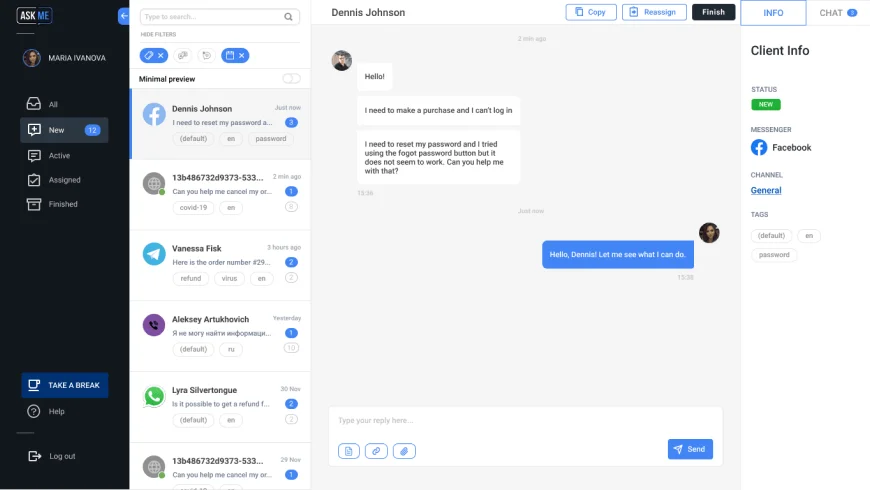There, it is depicted as consisting of three phases—system definition, physical design, and implementation. Other more elaborate versions of the SDLC specify many subphases of these three phases. Various SDLC methodologies have been developed to guide the processes involved, including the original SDLC method, the Waterfall model. Other SDLC models include rapid application development (RAD), joint application development (JAD), the fountain model, the spiral model, build and fix, and synchronize-and-stabilize.

Developers will typically use multiple tools, programming environments, and languages (C++, PHP, Python, and others), all of which will comply with the project specifications and requirements outlined in the SRS document. In the greater context of management information systems or MIS, SDLC helps managers to design, develop, test, and deploy information systems to meet target goals. Theoretically, this model helps teams to address small issues as they arise rather than missing them until later, more complex stages of a project. The agile model is relatively well-known, particularly in the software development industry. Once complete, development managers will prepare a design document to be referenced throughout the next phases of the SDLC.
What is a system development life cycle security testing provider?
Several pitfalls can turn an SDLC implementation into more of a roadblock to development than a tool that helps us. Failure to take into account the needs of customers and all users and stakeholders can result in a poor understanding systems development life cycle of the system requirements at the outset. SDLC done right can allow the highest level of management control and documentation. All parties agree on the goal upfront and see a clear plan for arriving at that goal.

It lacks the thorough requirements definition stage of the other methods. Application performance monitoring (APM) tools can be used in a development, QA, and production environment. This keeps everyone using the same toolset across the entire development lifecycle.
IV. Systems Development Life Cycle
New versions of a software project are produced at the end of each phase to catch potential errors and allow developers to constantly improve the end product by the time it is ready for market. Depending on the skill of the developers, the complexity of the software, and the requirements for the https://www.globalcloudteam.com/ end-user, testing can either be an extremely short phase or take a very long time. Take a look at our top 10 best practices for software testing projects for more information. In theory, all of the prior planning and outlined should make the actual development phase relatively straightforward.

One big disadvantage here is that it can eat up resources fast if left unchecked. Also, make sure you have proper guidelines in place about the code style and practices. The Smartsheet platform makes it easy to plan, capture, manage, and report on work from anywhere, helping your team be more effective and get more done. Report on key metrics and get real-time visibility into work as it happens with roll-up reports, dashboards, and automated workflows built to keep your team connected and informed.
Risk Management Framework Planning and Initiation
However, it is vulnerable to early delays and can lead to big problems arising for development teams later down the road. They’ll typically turn the SRS document they created into a more logical structure that can later be implemented in a programming language. Operation, training, and maintenance plans will all be drawn up so that developers know what they need to do throughout every stage of the cycle moving forward. Perhaps most importantly, the planning stage sets the project schedule, which can be of key importance if development is for a commercial product that must be sent to market by a certain time. In this guide, we’ll break down everything you need to know about the system development life cycle, including all of its stages. We’ll also go over the roles of system analysts and the benefits your project might see by adopting SDLC.
Embedded Software Engineer – IT-Online
Embedded Software Engineer.
Posted: Thu, 12 Oct 2023 10:44:47 GMT [source]
Within the SDLC framework, the Information System Architect takes on highly active roles during the planning, analysis, and design phases, and acts as a companion role in all other phases of development. In short, the iterative and incremental model works through multiple, repeated, and incremental cycles so developers can pinpoint which areas to improve based on previous deployments of the software. It’s dynamic, adaptive, flexible, lightweight, and extremely responsive, working in sprints with a defined time period to complete small and highly manageable tasks, thus reducing the time in which software goes live.
Stage 2: Analyze requirements.
The life cycle model or paradigm defines the overall organization and, as a rule, its main phases and principles of transition between them. The methodology or method determines the set of actions, their detailed content, and the roles/responsibilities of specialists at all stages of the selected software development model. Testing is critical to the system development life cycle to ensure compliance with functional, performance, and security requirements. Ideally, testing should happen at every stage of the SDLC to address issues early when they are fastest and most cost effective to fix. However, tests are often postponed until later stages, especially if they are not well integrated and create friction. This includes all the specifications for software, hardware, and network requirements for the system they plan to build.
- It ensures that the software is secure from initial design to final delivery and can withstand any potential threat.
- With that foundation as context, the quality and time spent on the planning phase have a direct correlation to the success of the project.
- Usually, organizations prefer to trust system analysts to make that decision and select the best-suited methodology or combination of models.
- The companies did an alpha release for internal testing; one or more beta releases (usually feature-complete) for wider testing outside the company, and finally a release candidate leading to a gold master, which was released to manufacturing.
- While the process timeline will vary from project to project, the SDLC generally follows the seven stages outlined below.
- Unfortunately, requirements grow and change throughout the process and beyond, calling for considerable feedback and iterative consultation.
While the Waterfall model is one of the classic SDLC models, there are other iterative and incremental models, like Agile, Scrum, and DevOps, which emphasize flexibility and continuous improvement throughout the development process. These methodologies allow for more frequent interactions with stakeholders and adaptability to changing requirements. The incremental model divides the product into builds, where sections of the project are created and tested separately.
1.5 Rapid Application Development
A primary problem with this approach is that it is assumed that all requirements can be established in advance. Unfortunately, requirements often change and evolve during the development process. The System Development Life Cycle (SDLC) provides a well-structured framework that gives an idea, of how to build a system. It consists of steps as follows- Plan, Analyze, Design, Develop, Implement and Maintain. We will delve into the significance of each stage, emphasizing the critical role played by System Design in the overall process. Project management methods shall be used to control the development process.
Getting early feedback from an end user enables the elimination of issues and bugs in the early stages of software creation. These are the approaches that can help you to deliver a specific software model with unique characteristics and features. Only after a rigorous process of requirements development is the team ready to embark on the design and development of a new or improved public health information system.
System Development Life Cycle US Guide
The gathered information serves as a basis for designing a system that meets users’ expectations and addresses organizational challenges. Most solution providers use the waterfall life cycle approach for software solution development. The waterfall approach (refer Figure 14.3) helps to understand the extent of the residual risks and allows one to work conscientiously toward reducing those risks. This high-risk SDLC model throws most of its resources at development and works best for small projects.
